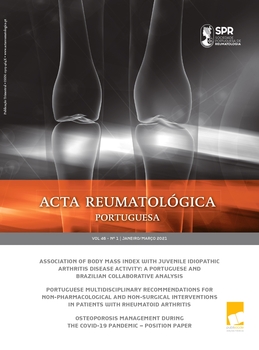Primary systemic vasculitides as the bridge in immune-mediated disorders: small vessels for autoimmunity, medium vessels for autoinflammation
Authors
Tiago Borges; Ana Rita Gomes; João Santos; Sérgio Silva;
Vasculitides have been classically considered to be mostly of autoimmune origin, but the role of the innate immune system is being increasingly recognized among primary systemic vasculitides. For example, Behçet’s syndrome (BS) shares more common features with autoinflammatory disorders (AIDs) than autoimmune diseases (ADs) and has recently been considered to be a polygenic AID by several authors, while others have classified it as a “mixed-pattern” disorder. This review aims to make a balance between autoinflammatory and autoimmune features of primary systemic vasculitides, including sex prevalence, association and/or familial aggregation with others AIDs or ADs, with human leukocyte antigen (HLA) system and/or disease-specific autoantibodies, type of cellular infiltration (neutrophilic or lymphocytic), clinical pattern (episodic or progressive), size of involved joints when articular involvement occurs, presence of lymphadenopathy or hypergammaglobulinemia, and therapeutic benefit of colchicine, IL-1 inhibitors and rituximab.
Except for Henöch-Schonlein purpura, autoimmunity is usually predominant in small vessel vasculitides, where disease-specific autoantibodies are common. On the other hand, medium vessel and even variable vessel vasculitides such as BS often course with autoinflammatory features (e.g. increased levels of IL-1, neutrophilic infiltration) are often more obvious than those typical of autoimmunity. Therefore, it is possible that disorders like polyarteritis nodosa or Kawasaki disease may be considered as “mixed-pattern” diseases in the future. Finally, both the innate and adaptive immune systems can have significant roles in large vessel vasculitis.
Tiago Borges
Department of Internal Medicine, Trofa Saúde Hospital Privado de Gaia, Vila Nova de Gaia, Portugal
Ana Rita Gomes
Department of Internal Medicine, Hospital de Vila Franca de Xira, Vila Franca de Xira, Portugal
João Santos
ACES Baixo Tâmega, UCSP Resende, Resende, Portugal
Sérgio Silva
Department of Internal Medicine, Trofa Saúde Hospital Privado de Gaia, Vila Nova de Gaia, Portugal
Department of Internal Medicine, Trofa Saúde Hospital Privado de Gaia, Vila Nova de Gaia, Portugal
Ana Rita Gomes
Department of Internal Medicine, Hospital de Vila Franca de Xira, Vila Franca de Xira, Portugal
João Santos
ACES Baixo Tâmega, UCSP Resende, Resende, Portugal
Sérgio Silva
Department of Internal Medicine, Trofa Saúde Hospital Privado de Gaia, Vila Nova de Gaia, Portugal





